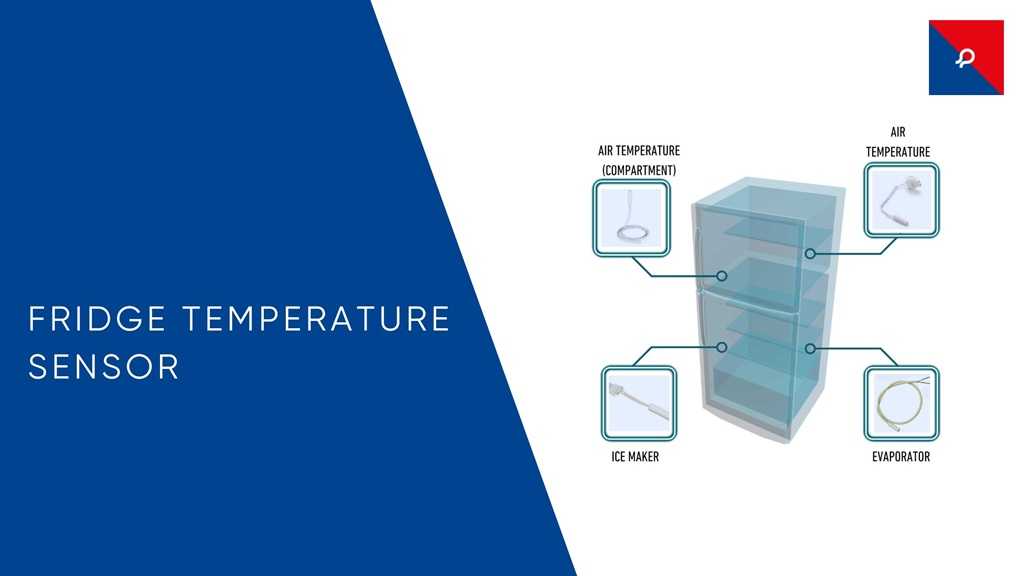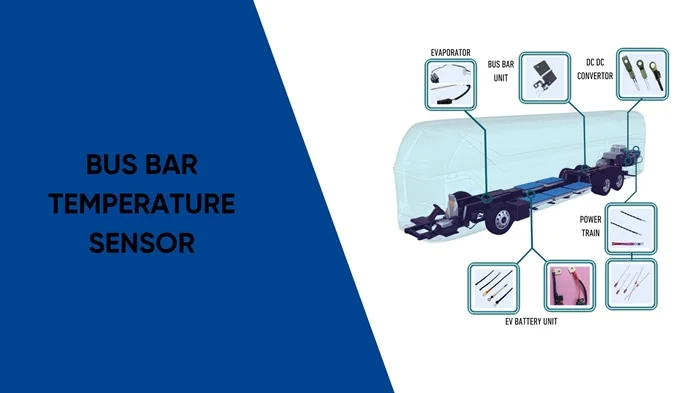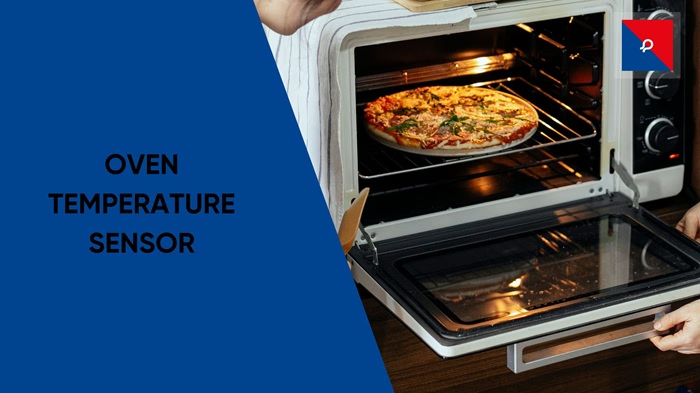
Understanding the Role of the Refrigerator Temperature Sensor- What It Does and Where It's Located
Understanding the Role of the Refrigerator Temperature Sensor- What It Does and Where It's Located

To put it simply, when you open that door to your Cooler, you don't just reach for that cold slice of pizza or a cold refreshing drink. You also interact with an intricate mechanism that is responsible for heating your food and keeping it well-organised. One of the neglected heroes to this mechanism lies in the refrigerator temperature sensor, or the fridge sensor for even short. Without it, your refrigerator will slowly draw itself into being oven-hot, erratic, and frankly totally useless at cold storage.
So, where is this ingenious little device situated and what function does it play? Here it is, let's dig in!
What Is a Refrigerator Temperature Sensor?
Temperature sensors, used in refrigerators, are tiny instruments that continuously monitor temperatures inside these cooling compartments and maintain them at proper levels for the comfort of their workings when it concerns the working environment of the foods. Refrigerators are a lot like toddlers, they become cranky if it gets too warm, and get downright obstinate if it gets too cold. The temperature sensor is the calm, collected one who keeps everything in check.
Where is the Refrigerator Temperature Sensor Located?
You may think that a fridge sensor is located at a secret place, but in fact, it is very easily found. The temperature sensor is mounted inside the refrigerator compartment or freezer compartment in most modern refrigerators. Near the evaporator coil, which is responsible for cooling the air inside the fridge, is likely where you will find it.
For refrigerators with dual temperatures, one for the fridge and the other for the freezer, you could find separate temperature sensors in both sections. This has the benefit of enabling the refrigerator to keep the much colder environment in the freezer while cooling the fridge section. Some fridges even contain a sensor that regulates the temperature from the fridge and the freezer depending on need.
When you open the door of the refrigerator, the sensor is most probably hidden behind a panel or is mounted onto the cooling coils or located nearby on the fan. If your fridge is quite old or is a particular model, the sensor may also be found in a much more obvious location, such as the back wall or near the bottom of the fridge.
What Does the Refrigerator Temperature Sensor Do?
Now that we know where the temperature sensor lives, what precisely does it do? Well, to put it in metaphorical terms, your refrigerator has hosted a party. Now just imagine, in this case, that the refrigerator temperature sensor, the party planner, is always seeing what the current temperature is like in the room so that everyone can be comfortable.
- Maintains Proper Temperature: Your fridge sensor's primary job is to keep your fridge at an appropriate temperature, generally ranging from 37°F (3°C) to 40°F (4°C). It is this optimum temperature range for retarding and preventing bacteria growth and extending the shelf life of your supplies. When the temperature exceeds this limit, milk, meat, and leftovers are regarded as spoiled. When it gets too cold, your lettuce will likely freeze, and your eggs are turning into ice cubes.
- Controls the Compressor: Thus, the sensor will be constantly monitoring the temperature and passing such data to the refrigerator's control system. The moment the temperature goes beyond the preset value, the sensor gives the signal for the compressor to kick-start, and cooling begins inside the refrigerator. When that optimum temperature is achieved, that same compressor, however, is switched off, as though the refrigerator said, "Ah, perfect! Time for a break."
- Improves Energy Efficiency: Well-functioning fridge sensors help conserve energy by running the compressor only when it is deemed necessary. If the sensor was not working, your fridge would either work constantly (wasting power) or fail to run often enough (which would spoil your food). That would not only be inefficient for groceries but also expensive!
- Ensures Even Cooling: Many people believe that the fridge is filled with cold air, but it isn't as simple as that. While some areas are cold, others are a little less cool. This imbalance is controlled by a temperature sensor that allows cool air to be evenly distributed through your fridge. Thus, when you place a new carton of milk in the door, the sensor prevents it from becoming less fresh than that last carton sitting at the back of the unit.
What Happens If the Temperature Sensor Goes Bad?
It is a common incident and can happen with any appliance at times, a refrigerator malfunction. Having the refrigerator temperature sensor malfunction is a nightmare, ranging from lukewarm milk to freezer burned vegetables. Here’s what can happen when the fridge sensor malfunctions:
- Erratic Temperatures: Broken sensors may present obvious signs of general inconsistencies in the temperature. There could be an instance when the refrigerator freezes your lettuce, the next day it becomes wilted. If the sensor does not correctly sense the internal temperature to adjust the cooling cycle, that won't work.
- Spoiled Food: In case a fridge fails to perform its function properly in retaining the food, spoiled meat would possibly lead to rotten vegetables and sour milk. Let's not even include in that the crushing feeling of unfortunately having to throw away an otherwise perfect pizza after a few days.
- Increased Energy Bills: The malfunctioning sensors either make the fridge run constantly or fail to cool sufficiently. Either way, your refrigerator ends up consuming far more energy than it should, ultimately leading to much-inflated electricity bills. It is like the fridge is trying to do its job, but is just throwing a tantrum.
Read Next: How to test fridge temperature sensor
How Can You Fix It?
Supposedly, your fridge sensor is malfunctioning and you are capable enough of fixing it yourself. Here's what you can do:
- Check out for dirt or debris: Sometimes, the sensors just need to be cleaned. Dirt, as well as frost, can disturb the readings.
- Testing the Sensor: You can usually use a multimeter to check whether or not the sensor works, by measuring its resistance at different temperatures.
- Change out the Sensor: If none of these options worked on your fridge sensor, you will probably replace it instead. Most replacement sensors aren't too expensive and relatively easy to install.
Refrigerator Temperature Sensor by JR Sensors
JR Sensors transform the accurate and reliable sensors for refrigerators. Their sensors allow precise monitoring of internal temperatures, allowing energy usage to optimize storage conditions. JR Sensors ensure appliance performance and mitigate spoilage by providing durable solutions. This guarantees consistent and safe food preservation.
Conclusion
The refrigerator temperature sensor is a small, seemingly insignificant part of your fridge, but believe me, it is the reason your food does not spoil within hours. It ensures that your fridge cools, your food remains fresh, and your energy costs are reasonable. Therefore, next time you open the fridge, it would be nice to think about that small yet really important sensor doing its job silently in the background. The unsung hero of your kitchen is always working tirelessly to ensure that your leftovers do not turn into science experiments.
Who knew that a small sensor could do so much?
Frequently Asked Questions
1. What is the purpose of a refrigerator temperature sensor?
2. Where is the refrigerator temperature sensor located?
3. How can I tell if my fridge temperature sensor is faulty?
4. Can I replace the refrigerator temperature sensor myself?
5. How does a refrigerator temperature sensor help with energy efficiency?

Busbar Watchdogs: The Tiny Sensors Preventing Massive Power Failures
Think of them as your system’s early warning system. Busbar temperature sensors silently protect power grids, data centers, and switchboards from overheating, fire, and failure. Discover why this small sensor plays a big role in electrical safety and uptime.

Beyond Specs: 5 Must-Know Factors When Choosing a Thermistor Sensor Manufacturer
Not all thermistor manufacturers are created equal. Whether you're building a medical device or a smart appliance, this guide breaks down the 5 key factors that ensure you get precision, reliability, and peace of mind.

Burnt Biscuits? Blame the Sensor – The Hot Truth About Your Oven’s Temperature Troubles
If your oven’s cooking like it’s got a mind of its own, your temperature sensor might be the silent saboteur. From half-baked casseroles to scorched cookies, we break down how this little sensor works, why it matters, and how to fix it—without losing your cool (or your dinner). A fun, practical guide that’s just as useful as it is digestible.